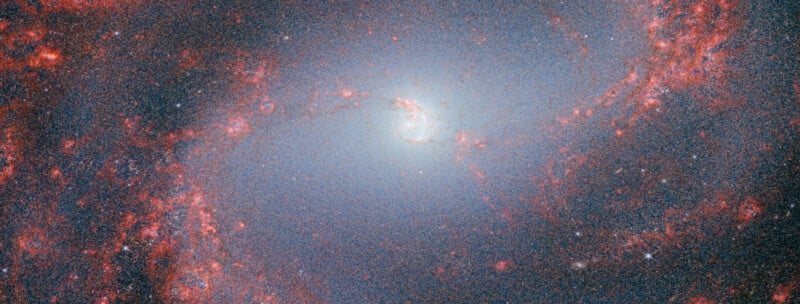Webb’s Spectacular and Beautiful Views of the Crab Nebula and M83
![]()
It has been a busy week for the James Webb Space Telescope. Fresh images of the Crab Nebula and the Messier 83 spiral galaxy have been shared, showcasing incredible new views of the cosmos.
The Crab Nebula Is a Nearby Supernova Remnant That Confounds and Enchants
Webb used its Near-Infrared Camera (NIRCam) and Mid-Infrared Instrument (MIRI) to gaze at the Crab Nebula in hopes of understanding the origins of the supernova remnant. With Webb’s incredible infrared imaging capabilities, scientists have uncovered new details that have never been seen.

Compared to Hubble’s optical wavelength image released in 2005, Webb’s infrared and near-infrared views show a similar basic structure — “a crisp, cage-like structure of fluffy red-orange filaments and knots of dust” around the object’s central area, per the European Space Agency (ESA) — but Webb’s advanced instruments expose more of what is known as synchrotron emission.
Visible in Webb’s image as the milky, smokey area throughout the Crab Nebula’s interior, synchrotron emission is generated by “particles accelerated to extremely high speeds as they wind around magnetic field lines,” ESA explains. Synchrotron radiation is emitted across the electromagnetic spectrum, but Webb’s sensitivity and resolution make it exceptionally detailed and visible.

The radiation is a product of the nebula’s pulsar, a rapidly rotating neutron star. “The pulsar’s strong magnetic field accelerates particles to extremely high speeds and causes them to emit radiation as they wind around magnetic field lines,” explains NASA.
The Crab Nebula is located just 6,500 light-years away from Earth in the constellation Taurus, making it a relatively nearby cosmic object. The supernova event was seen and recorded by 11th-century astronomers, although the precise nature of the event remains mysterious. That said, Webb’s resolution helps scientists pick up critical new details.
“Webb’s sensitivity and spatial resolution allow us to accurately determine the composition of the ejected material, particularly the content of iron and nickel, which may reveal what type of explosion produced the Crab Nebula,” explains Tea Temim, research astronomer from Princeton University.
M83 Offers a Visual Treat
Webb’s NIRCam and MIRI instruments also looked at Messier 83, a barred spiral galaxy located about 15 million light-years away in the constellation borders of Hydra and Centaurus. Discovered in 1752 by Nicolas-Louis de Lacaille, M83 is massive, nearly 120,000 light-years in size.
Webb has imaged M83 as part of the series of observations called Feedback in Emerging extragalactic Star clusTers, or FEAST. Images of another target of the FEAST observations, M51, were also shared recently.


What will Webb look at next, and what will the long-term impacts of the mission be on humanity’s understanding of the universe? Only time will tell.